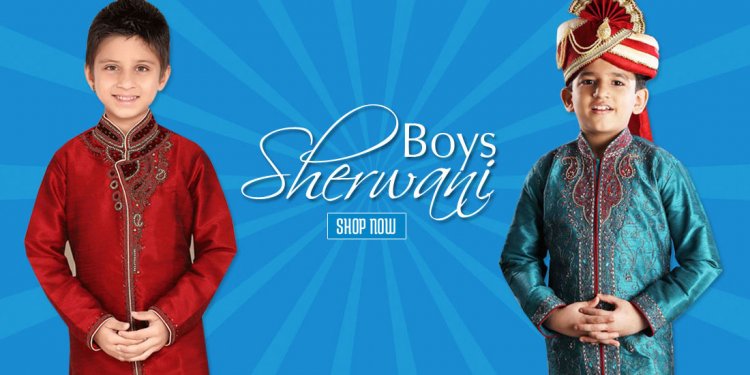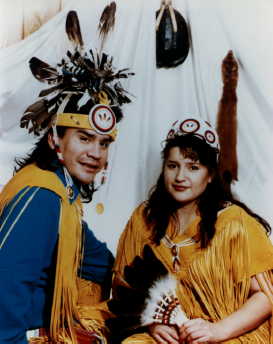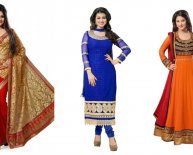
Childrens Indian clothing
 Haudenosaunee kids' webpage
Haudenosaunee kids' webpage
Photo of Mike & Rae McDonald 1999 ©
Iroquois Regalia:
Mohawk * Oneida * Onondaga * Cayuga * Seneca * Tuscarora
by Kanatiyosh
The Iroquois, or once we choose to phone ourselves, the Haudenosaunee (folks of the Longhouse), used materials for clothing found in our natural environment. Typically the Haudenosaunee utilized furs obtained through the woodland pets, hides of elk and deer, corn husks, and in addition they wove plant and tree materials to make articles of clothing. The thing I discover very interesting about Haudenosaunee garments, is the fact that despite the fact that in modern we incorporated calico and other fabrics into our clothes, the style in addition to symbolic designs of our regalia continues to be the same as it did since forever. Therefore, when you see our women's regalia produced from calico and wide fabric, in the event that you could make you mind's attention consider it to be made of deerskin you would certainly be going back in its history to when no shops existed for which purchase these types of materials. This isn't to say that we not any longer utilize conventional products to create our regalia because we still do, but one should realize that Native American tradition is powerful, for this is a full time income culture in which version and inherence to tradition is necessary for a lifetime to carry on. In this article, i am going to describe and give an explanation for Haudenosaunee regalia of your women and men from head to foot.
Haudenosaunee Guys's Regalia
In describing Haudenosaunee regalia, I would ike to begin with the headwear. Many people erroneously think that all Native United states Indians wore plains design war bonnets, which will be untrue. This myth started during the early the main 1900's toward 1950's when photographers wished Iroquois people to wear war bonnets when posing for photos since they believed it looked more "Indian", which has cause old photos of Iroquois men and women in war bonnets. We have even a photo of my great uncle putting on one. However, the Haudenosaunee have actually their own style of feathered headwear, which is very gorgeous, known as within the Mohawk language, a Kastoweh (gah sto wha).
Kastoweh (Feathered Hat)
The Kastoweh has actually a-frame which produced from 3 black ash splints. One splint wraps all over mind. The 2nd splint operates from north to south and it is bowed to suit over and round the top of the head, and also the third splint runs from eastern to west and is additionally bowed, after that both pieces are guaranteed to the splint that operates all over head by sinew. This will make a wonderful frame. Sometimes the top of the splint frame is covered with deer epidermis or today by fabric. On the outside of this headband, it was traditionally embellished with Haudenosaunee symbols, typically made with porcupine quills, or wampum beads. In old age a band of gold had been created and connected. When cup beads were introduced some kastoweh groups had been beaded. These days one might see any of the aforementioned bands connected to the Haudenosaunee feathered hat. The Haudenosaunee in addition wore fur headdresses, plus deer hair roaches.
Shirts, Sashes, and Bibs
Haudenosaunee males traditionally wore fringed tops created from deerskin. In the summer months males would often not use a top, but dons a finger-woven sash that moved on the right neck and ended up being attached to the waistline. These sashes had been woven from plant products sometimes elm, or basswood fibers were utilized, also nettle fibers. Sashes can had been manufactured from deerskin and decorated with clan themes or any other Haudenosaunee symbols created using porcupine quills, wampum beads, or glass beads. Sometimes the gold brooches are mounted on develop an extremely stunning design. Recently, the Haudenosaunee have added employing fabric (broadcloth and calico are some of the preferred types) and ribbons to produce t-shirts.
Haudenosaunee men's regalia also can contains a leather, wool, or cloth neck pieces, which can be referred to as a bib. These bibs tend to be elaborately embellished with either quill, or beadwork. While Im discussing devices and sashes, I should point out that wampum belts were in addition used as sashes, and that deer feet had been worn round the legs, which made sound, similar to bells do.
Kilts, Leggings and Breech-Cloth
Kilts had been traditionally made from leather and sides fringed and embellished with porcupine quill-work. Kilts are guaranteed round the waist by a sash. Today kilts may be created from cloth, usually wool in purple or black colored is preferred. Additionally worn with a kilt, or breech cloth tend to be leather-based, wool, or broadcloth leggings which can be often attached by split connections to a sash-or threaded through a sash or leather belt.

















